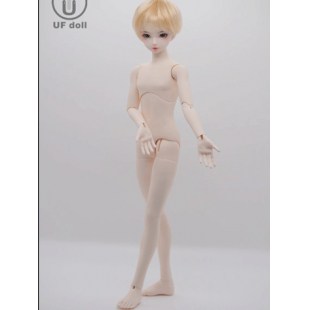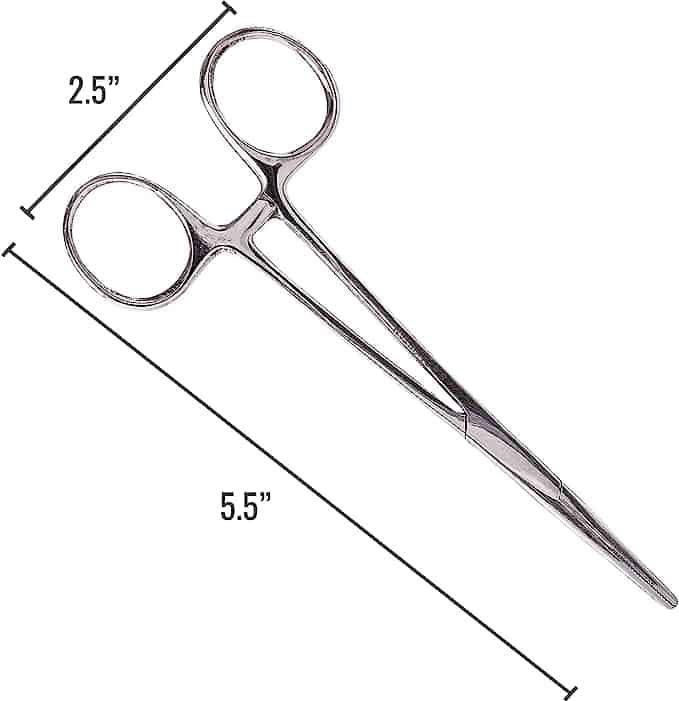The Basics: BJDs and their Maintenance Needs

(Image courtesy Legenddoll)
BJDs, or Ball Jointed Dolls, have become increasingly popular due to their highly customizable nature and lifelike posing capabilities. These dolls are made of resin and feature joints that are strung together with elastic cords. While they may look stunning on display, it’s essential to recognize that BJDs require regular maintenance in order to maintain their poseability and overall appearance.
One aspect of maintaining a BJD is restringing, or replacing the elastic cord that holds the doll’s joints together. Over time, this elastic can become worn out or stretched beyond its original shape.
This can result in loose or floppy joints, limbs falling off easily, or difficulty holding poses. Knowing when to restring is crucial for keeping your doll looking and performing at its best.
The Importance of Recognizing Signs Your BJD Needs a Restring
(Image courtesy Legenddoll)
As mentioned before, recognizing when your BJD needs a restring is key to maintaining its posing abilities and overall appearance. Loose or floppy joints are one common sign that it’s time for a tune-up – if you find your doll isn’t staying in a place as it used to, that’s a clear indicator that something needs fixing.
Another sign is difficulty posing or holding poses – if you’re struggling to get your doll into the positions you want it to be in, chances are the elastic cord needs replacing. If limbs start becoming floppy or loose during normal play or posing sessions this is your signal to fix your strings.
It may be tempting to put off restringing until these issues become more severe – after all, it can be time-consuming and sometimes tricky work.
But taking care of these problems sooner rather than later will ultimately save you from more serious damage or breakage down the line. So keep an eye on your BJD’s joints and overall posing abilities, and recognize the signs that it’s time for a tune-up.
Signs Your BJD Needs a Restring
Loose or Floppy Parts: A Warning Sign
Do your BJD’s legs and arms feel weak and wobbly? Do the limbs swing back and forth when you hold the doll up? If yes, it may be time to restring your doll.
Over time, the elastic cord that holds your doll together may become stretched out or worn out. This can happen due to regular wear and time.
Difficulty Posing or Holding Poses: A Frustrating Issue
Are you having trouble getting your BJD into the desired pose? Do they refuse to stand or sit up? Do they fall out of position easily?
If so, it could be due to loose stringing. The elastic cord inside your doll is responsible for holding its limbs in place and maintaining its posture.
When this cord starts to lose elasticity, it becomes challenging for the doll to hold poses correctly. You may notice that certain poses are more challenging than others, especially those requiring more significant tension on specific areas of the doll’s body.
Creaking or Cracking Sounds When Posing: An Ominous Sign
Do you hear creaking or cracking sounds whenever you move any part of your BJD’s body? This is a clear sign that your doll needs a restring. These sounds usually result from the elastic cord being stretched beyond its capacity, causing joints to rub against each other’s surfaces.
It can be tempting to ignore this issue or assume that the noise will go away on its own, but it will only worsen as time passes. Restring your doll is the best action to prevent further damage and ensure long-term playability.
Tools You’ll Need for Restringing
Elastic cord
When you restring your BJD, the elastic cord is arguably the most important tool you’ll need. This cord will be responsible for holding your doll’s limbs and torso together and ensuring that they can bend and pose without falling apart.
When purchasing elastic cord, make sure you choose a thickness that is appropriate for your doll’s size and weight. You don’t want a cord that is too thin or too thick, as this can affect your doll’s posing ability. Most BJD sites will have elastic labeled for the different BJD sizes. You can either buy elastic through places like Amazon or through distributors like Alice’s Collection.
S-hooks
Another important tool you’ll need for restringing is S-hooks. These hooks will connect the elastic cord to the ball joints in your doll’s limbs and torso.
S-hooks come in various sizes, so be sure to choose appropriate ones for your doll’s size. It’s best to have a variety of sizes on hand just in case some parts have different sized joint hooks.
String/Crochet Hook
Sometimes it becomes very hard to feed the elastic chord through the parts. Using a thin crochet hook or a plastic string and help feed the elastic through different pieces.
Pliers
You’ll need a pair of pliers to help with the restringing process. Pliers can be used to open up the S-hooks so they can be attached more easily during assembly.
They can also come in handy when pulling the elastic cording through tight spaces or making knots at the end of each piece of elastic cording to secure them onto each other or around an S-hook.
Forceps
Lastly you could also use forceps. This tool can help you hold strings in place and prevent string from moving around while you put on s-hooks. Just be careful with how it sits against parts while its clamped to your strings.

In addition to these three tools, it’s important to have a clean work area where you can lay out all of your BJD parts and tools without losing anything important along the way.
Step-by-step Restringing Process
Disassembling the doll
(Image courtesy Legenddoll)
Before you can start restringing your BJD, you’ll need to disassemble it. This process involves removing the head, arms, and legs from the body. You may need pliers to carefully remove the S-hooks that connect these pieces to the elastic cord.
It’s important to be gentle during this process, as you don’t want to damage any of your doll’s delicate parts. If you’re having trouble removing a piece, try clamping the elastic chord at the base of the leg or arm so you can safely remove the s-hook.
Removing old elastic cord
Once you’ve disassembled your doll, you must remove the old elastic cord. Don’t throw away the old cord just yet though. You can use that as a guideline for measuring the new string.
Threading elastic cord through the doll’s limbs and torso
Now comes one of trickiest parts: threading each piece of elastic through its corresponding limb or torso hole. It’s helpful here to have that string or crochet hook – they can be used for coaxing cords through tight spaces.
Take your time and be patient, as this can be a fiddly process. Once you’ve got the cords threaded through make sure all your knots are facing towards the inside of the body.
Reassembling the doll
It’s time to put your BJD back together. Most dolls have two major loops of elastic. One that goes through the torso and out the arms. Then the other loop goes through the neck down to the legs and hooks to the feet.
As you attach each limb, make sure that it moves smoothly and easily – if anything feels stuck or stiff, you may need to adjust the elastic cord length or rethread it through the hole. With all limbs securely attached and moving freely, your BJD is now ready for posing once again!
Tips for Maintaining Your BJD’s Stringing in Between Tune-Ups
Avoid Over-Stressing Joints During Posing
While posing your BJD, it’s important to avoid over-stressing the limbs. This means being mindful of the tension you’re putting on each joint as you manipulate your doll into different poses. If you notice a joint is particularly stiff or resistant to movement, don’t force it!
Applying too much pressure can cause the elastic cord to stretch beyond its capacity, leading to permanent damage or even breakage. Use gentle, fluid movements when manipulating your doll to avoid over-stressing joints during posing.
Take care to support any limbs or body parts under tension, especially if they’re being held at an extreme angle.
Store Your Doll in a Cool, Dry Place to Prevent Deterioration of Elastic Cord
Another important aspect of maintaining your BJD’s stringing in between tune-ups is proper storage. To keep your doll’s elastic cord from deteriorating prematurely, storing it in a cool and dry environment is best. Avoid exposing your doll to direct sunlight for extended periods – this can cause the elastic cord to become brittle and weak.
Additionally, ensure that your doll isn’t exposed to excessive humidity or moisture, which can promote mold growth. When storing your BJD, consider investing in a dedicated display case or cabinet that will protect it from dust and other airborne particles.
You may also want to wrap your doll loosely in soft cloth before storing it away – this will help prevent any scratches or damage caused by friction between body parts during transport. Taking these precautions will help extend the life of your doll’s elastic cord and ensure that it stays in good condition between restringing sessions.
Conclusion
Don’t Wait for a Breakdown: Why Recognizing Signs Your BJD Needs a Tune-Up is Key
Preventative maintenance is always better than waiting for something to break down before taking action. Regarding your BJD, recognizing the signs that it needs a restring can save you time, money and heartache. By staying on top of your doll’s maintenance needs, you can keep it looking and functioning at its best for years.
Restringing: A Simple Process That Can Make All the Difference
Many BJD owners are intimidated by the thought of restringing their dolls. However, with some basic tools and a little bit of patience, restringing is a very simple process. Following the step-by-step instructions outlined in this article, you can give your doll the tune-up it needs in no time.
Regular maintenance is key to keeping your BJD looking and working its best. By recognizing the signs that your doll needs a restring and taking action when needed, you can ensure that your beloved doll will last for many years. Learn more about restringing your BJD by watching my Youtube video.
Recent Posts
Come join my BJD Newsletter where you will learn about new dolls coming out, BJD doll sales, and artist highlights! There will also be other BJD goodies just for you!
The Enchanting History of Ball-Jointed Dolls (BJDs): From Antique Origins to Modern Culture
Discover the rich history of BJD dolls, from their early origins to modern development and current controversies. A must-read for collectors and enthusiasts!
